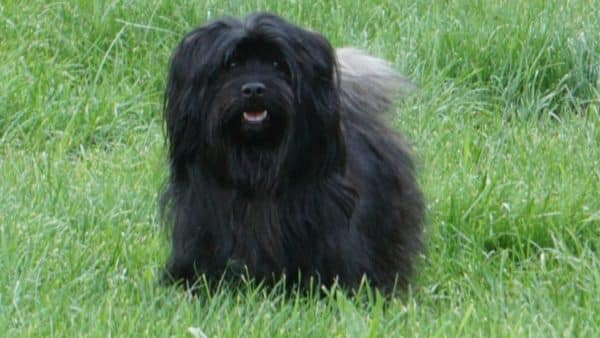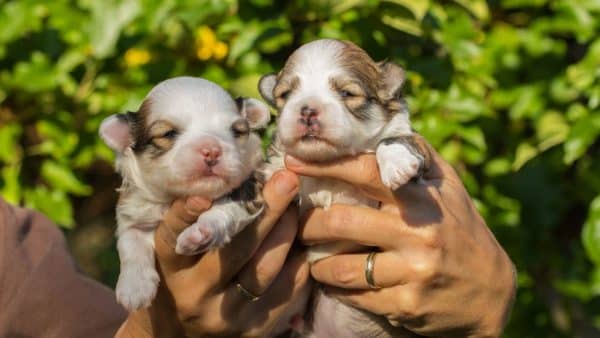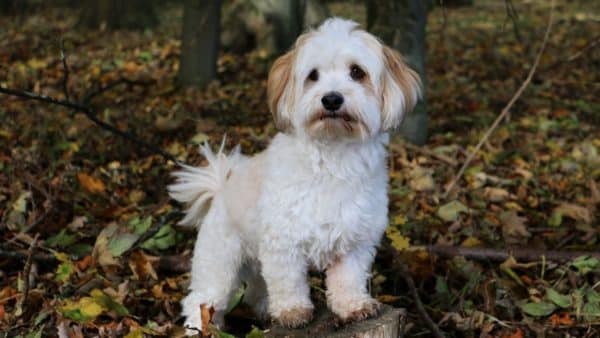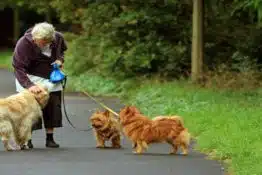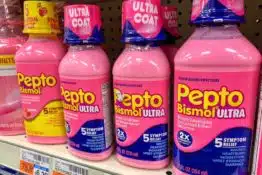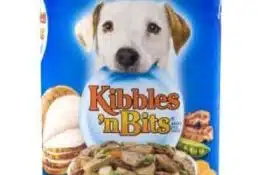
Havanese Dog Breed Guide: Facts, Health & Care
A Ancient Dog
The Havanese dog breed is ranked as 24th out of 197 dog breeds recognized by the American Kennel Club; the Havanese is among the world’s most popular dogs, especially for people allergic to dog hair and dandruff.
This complete guide gives a review of the breed’s history, personality, lifestyle requirements, and more. Please read the article to learn how the only native Cuban dog conquered the love of dog enthusiasts worldwide.
Breed Basics
| Breed Group | Toy Group |
| Temperament | Intelligent, funny outgoing |
| Life Span | 14-16 years |
| Weight | 7-13 Ibs |
| Height | 8.5-11.5 inches |
| Colors | Black, blue, silver, chocolate, brindle, red sable, gold, champagne, cream and white |
| Origin | Cuba |
Best Supplements for Havanese Dog Breed
For Havanese dogs, consider Omega-3 fatty acid supplements for a healthy coat and joint supplements containing glucosamine and chondroitin for mobility. A balanced multivitamin can fill nutritional gaps, while probiotics support digestive health. Adding a small amount of coconut oil may contribute to skin health. Always consult your veterinarian before introducing supplements to ensure they align with your Havanese’s individual health needs and well-being.

- Joint health support for dogs: cosequin, the #1 veterinarian recommended retail joint health supplem
- Omega-3 fatty acids: each soft chew also contains omega-3 fatty acids to help support skin and coat
- Manufactured in the united states with globally sourced ingredients: cosequin is a high-quality, dog
- From the #1 veterinarian recommended supplement company*: nutramax laboratories veterinary sciences
- Backed by science: nutramax laboratories veterinary sciences supplements are veterinarian formulated

- This natural fish oil additive supplement works to support your pal’s skin, coat, hips and joints, heart and immune system.
- The premium salmon oil is rich with omega-3 and -6 fatty acids from EPA and DHA to promote soft skin, a shiny coat and good overall health.
- May also help support proper hip, joint, heart and immune function.
- Makes a yummy alternative to capsules or soft chew supplements—simply add to your pet’s favorite meal.
- Great for small, medium and large breed dogs or cats.

- Your sidekick deserves a shiny coat and healthy skin she can feel proud of and show off.
- A therapeutic blend of organic horsetail, dandelion, spirulina and bladderwrack help maintain hair shafts and follicles to promote healthy skin and hair.
- Give your gorgeous girl the capsule whole or mix it into her food.
- PetAlive supplements are made from lab-tested, raw ingredients with no added fillers, gluten, artificial colors, flavors or preservatives.
- Made in FDA-registered, cGMP (current Good Manufacturing Practice) compliant facilities.
Havanese History
The Havanese’s ancient ancestor is believed to have originated somewhere along the Italian and Spanish coastal region. The ancestor included many Bichon traits and was bred specifically to serve as a company for the ruling classes’ noblemen and royals. The dog was highly cherished and praised, never sold or bought – it was always acquired as an impressive gift.
After Columbus discovered the new continent, the Havanese’s ancestor was imported to Cuba. Here, not only this Mediterranean dog thrived, but it continued its evolution. After years of mixing with local dogs, it evolved and developed into what today we know as the Havanese. It goes without saying that the breed was named after Cuba’s capital – Havana.
Sadly, the Cuban, French and Russian revolutions took their toll, and the breed almost went extinct. After Castro’s revolution, a group of Cubans managed to flee the country and seek refuge in the United States.
With them, they brought 11 Havanese Dogs. Those 11 dogs were the genetic foundation stock for the modern Havanese, we all know and love. In the United States, the breed became instantly popular, and its popularity was the Havanese’s escape card from extinction.
Havanese Appearance
The Havanese is small yet sturdy. it’s long back, concise front legs, and slightly angled hind legs make it a very stocky dog breed. The overall body frame can be described as somewhat longer than tall.
The dark, almond-shaped eyes are set wide apart and with an intelligent expression. The nose is squared off, broad and dark. The broad-based ears are distinctively folded and dropped. The plumed tail is graciously curled over the back and arched forward.
Size
Havanese males are 9-11.5 inches tall (22.8-29.2 centimeters) and weigh about 8-13 pounds (3.6 to 5.9 kilograms). Females are about 8.5-10 inches tall (22-25.4 centimeters) and weigh about 7-12 pounds (3.1 to 5.4 kilograms).
Coat & Color
In honor of its silky coat, The Havanese was once known by the name “Blanquito de la Habana” which translates to the “Havana Silk Dog”. The silk coat consists of two layers – short and soft undercoat and incredibly long (6-8’’ or 15-20 cm) outer coat that can be straight, wavy, or curly. The eyes are usually covered by long strands of hair that have a protective purpose.
The long silky coat can have any canine rainbow color – black, blue, silver, chocolate, brown, sable, red, fawn, cream, champagne, and white. In addition to solid colors, bi and tri-color variations are possible and acceptable.
Havanese Grooming & Maintenance
The Havanese’s coat is classified as extremely low-shedding and hypoallergenic which makes this dog suitable for people with allergies. According to experts this breed is accredited with 1 out of 5 points on the shed intensity scale.
However, the long and fluffy double-coat requires frequent grooming – brushing 2 to 3 times per week and bathing at least twice a month. Not precisely the wash-and-wear type of dog, right?
Do not forget that grooming includes more than brushing and bathing. When pampering a Havanese, pay attention and thoroughly clean its ears and teeth. It is also advisable to trim the nails and express the anal glands. Last but not least, take care of the pads by applying specifically formulated moisturizing ointment.
Havanese Temperament & Personality
Havanese Dogs are quite needy when it comes to human affection and attention. Like all dogs, they thrive on human interaction, companionship, and love manifestations. Neglect will cause stress and anxiety for them.
Havanese Dogs are not as demanding as their toy dog breed relatives, but they still enjoy being the center of attention. They like learning tricks, and they like showing those tricks to keep their humans well-entertained.
Havanese Dogs are playful, naturally social, affectionate, and gentle dogs. They are very patient and fond of children of all ages. They enjoy playing puzzle games and participating in activities that challenge their sharp minds as brilliant dogs.
Havanese Dogs find it hard to cope with loneliness. If left without human companionship for long periods, they become anxious and eventually develop separation anxiety. It should be accented that the Havanese is a particularly loud and tenacious barker. Its vocal capacity combined with its diminutive size is hilarious. That same combination makes the Havanese a great watch but, sadly, poor guard dog.
Training your Havanese
Because of their keen intelligence, easy trainability, and fondness of tricks, Havanese Dogs were popular circus performers in the past. Even modern Havanese Dogs enjoy nothing more than learning a good trick; well, they do like showing off with it.
As long as positive reinforcement techniques are used, the Havanese Dog can learn just about anything. An abundance of treats and praises will also help the training process. Harsh approaches with yelling and scolding have a negative impact – they cause the Havanese to shut down and refuse further collaboration.
The brick and mortar of raising a well-behaved Havanese is extensive and early socialization. A well-socialized Havanese gets along well with other dogs and smaller pets. Non-socialized Havanese Dogs are wary of strangers and unnaturally timid and shy.
Young Havanese pups need to get used to new experiences, people, surroundings, noises and smell. They should also learn to accept being touched and handled. This is particularly important since Havanese require tons of grooming.
Finally, when parenting a Havanese dog, it is advisable to invest some time and effort in anti-barking training. In the long run, this will save your eardrums tons of annoying and unnecessary noise.
Havanese Exercise Requirements & Energy Level
The Havanese is a moderately active dog breed that prefers exercising its mind over its body. A daily walk in the park or a short play session in the backyard is enough to satisfy its exercise requirements. Even a vigorous romping session inside the house can do the trick.
Over-exertion must be avoided in Havanese dogs. If your Havanese starts panting and is having a hard time keeping up, call it a day and get back home.
Because of their low exercise requirements, Havanese Dogs are perfect companions for both house and apartment dwellers.
Common Havanese Health Issues
Although classified as a reasonably healthy breed, the Havanese can be prone to several inherited and acquired health issues. Havanese dogs are genetically predisposed to orthopedic problems like hip and elbow dysplasia and patellar luxation.
They are also at higher than average risk of developing eye conditions like progressive retinal atrophy, persistent pupillary membranes, and cataracts.
Hypothyroidism, congenital deafness, portosystemic liver shunts, and oligodontia (missing teeth) are also frequently reported in breed members. So far, there are no known drug sensitivities in the Havanese Dog.
Health Concerns
-
- Hip and elbow dysplasia
- Patellar luxation
- Eye conditions – progressive retinal atrophy, persistent pupillary membranes, cataracts, distichiasis, vitreous degeneration
- Endocrine issues like hypothyroidism
- Teeth issues
- Liver shunts
- Congenital deafness
Recommended Health Tests from the National Breed Club
-
- Hip Evaluation
- Ophthalmologist Evaluation
- BAER Testing
- Patella Evaluation
Read the Official Breed Club Health Statement here
Diet & Nutrition Needs: Feeding your Havanese
Havanese dogs thrive on high-quality dog foods that should be chosen according to their age group. Havanese do best on kibble formulated for toy dog breeds – the small-sized kibble are easier to chew and bearing in mind their teeth problems, this feature can be quite helpful.
The Havanese has a healthy and often excessive appetite, making it prone to gaining weight. Havanese Dogs should be put on strict feeding regimens to prevent unnecessary and potentially harmful weight gain. The number of treats should be limited, and table scraps, cooked bones, and human foods should be avoided at all costs.
Fortunately, there are many dog food formulas designed specifically for weight management. To add diversity to the Havanese menu, you can use home-made, canine-friendly, and low-calorie treats.
Tips for Adopting & Raising a Havanese
Purebred Havanese dogs usually cost between $1000 and $1500. Before buying, make sure you are dealing with a reputable and responsible breeder. Responsible and reputable breeders provide full documentation and have their puppies dewormed, vaccinated, and well-socialized before offering them for sale.
Responsible breeders will allow you to meet the pup’s parents or at least the mother. They will also arrange for you to meet your future Havanese pup several times before actually bringing it home.
Keep in mind that the purchase price is only the beginning of the expenses. You will need to invest in dog food, dog items (bed, bowls, leash, collar, toys) and veterinary care. Ultimately, with a Havanese dog in your house you will definitely have to set up a grooming fund.
Parenting a Havanese Dog is a full-time job – it requires tons of time, love, and patience. However, the benefits are definitely worth it.
Havanese FAQs
Q: Are Havanese Dogs high-maintenance?
A: Yes, to maintain their long, silky, full coats healthy and tangles, Havanese Dogs need tons of grooming.
In terms of brushing, that would be at least two to three times per week, and in terms of bathing – twice a month.
Q: Are Havanese yappy?
A: Havanese Dogs enjoy participating in barking sessions, especially if there is an interesting passerby they want to greet, however, because of their eagerness to please, they can be easily trained out of this habit.
Q: Do Havanese Dogs shed?
A: Every dog that has fir sheds, but the Havanese is listed among the least-shedding dog breeds. With proper grooming, you will not even notice loose hair.
Q: Is Havanese a good dog?
A: Yes, the Havanese is a good-natured, smart, affectionate, and loyal companion dog. Bred solely for the purpose of being a companion dog, the modern Havanese is still true to its heritage.
Official Resources: Breed Clubs, Rescues & Helpful Links
- Official Breed Club: Havanese Club of America
- Rescue A Corgi: Rescue Committee of the Havanese of America
- Official AKC Profile: Havanese Breed Information
- Breed Standard: Official Standard for the Havanese
- Find a Puppy – AKC Marketplace: Havanese AKC PuppyFinder
Recommended Products for Havanese Dog Breed
Similar Dog Breeds
Related Groups & Characteristics

